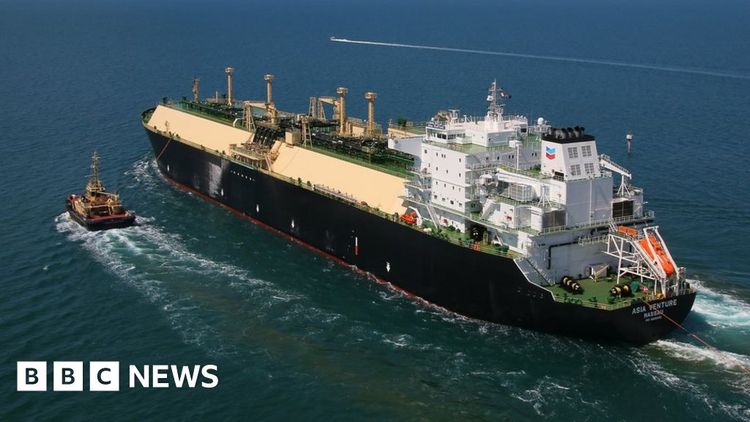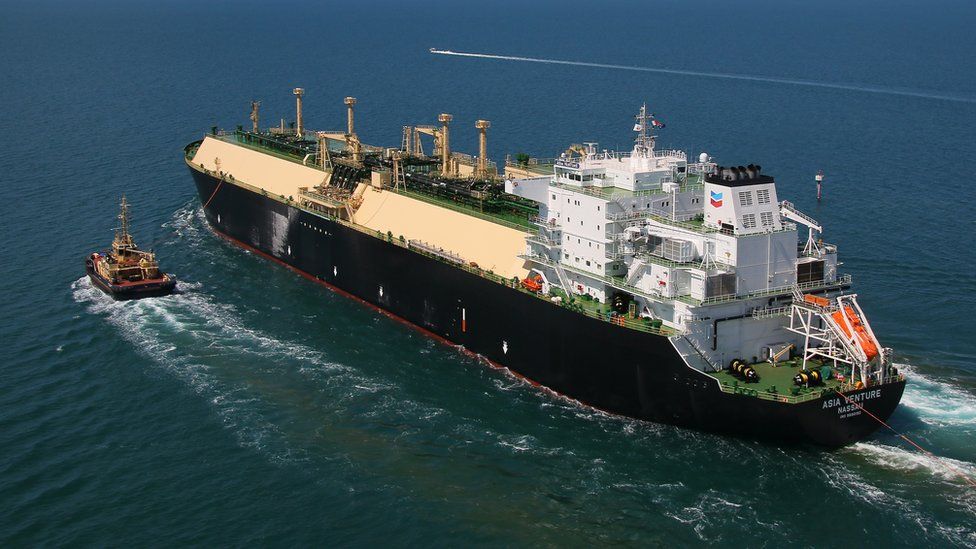Chevron: Workers at major Australia gas facilities to strike

The Wheatstone facility, operated by Chevron in the western region of Australia, delivers liquefied natural gas (LNG) to markets across the globe.

Employees at two major liquefied natural gas (LNG) facilities located in Australia, under the management of Chevron – a prominent energy corporation based in the United States – are preparing to initiate a strike starting on 7th September. If this action is carried out, it has the potential to increase worldwide prices.
After several weeks of talks with labor unions regarding wages and working conditions, this situation has unfolded.
Chevron informed the BBC that it plans to "persist in implementing measures to sustain secure and dependable operations should any disturbance arise at our establishments."
Recent concerns about strikes resulted in an increase in wholesale gas prices on the European market.
The Wheatstone and Gorgon facilities yield over 5% of the global liquefied natural gas (LNG) output, and approximately 500 individuals are presently hired at these two locations situated in Western Australia.
Employees at the two establishments are intending to initiate a series of strikes commencing on 7th September.
According to a strike strategy examined by the BBC, the labor dispute will result in employees ceasing work for a maximum of 11 hours per day.
Chevron stated on Tuesday that although they do not think that resorting to industrial action is needed to come to an agreement, they acknowledge that employees have the entitlement to engage in safeguarded industrial action.
The company expressed that it would persist in engaging in negotiations to achieve results that benefit both its employees and itself.

The Offshore Coalition - a collaboration between two labor unions that advocate for energy employees, including those employed at Chevron - stated that it has been engaged in negotiations with the company regarding various important matters. These issues encompass salary, reassurance of employment, work schedules, and quality of training.
According to the statement, employees were consistently dissatisfied with the manner in which the company handled discussions with the union. Chevron also refused to acknowledge that the work performed for the company should adhere to a universally accepted agreement in the industry.
According to energy expert Saul Kavonic, he anticipates that the strike will not greatly affect worldwide gas prices. Nevertheless, he cautioned that if the protest intensified, energy costs could skyrocket.
"If, by some small chance, there is a long-term shortage in the supply chain, we might see prices return to the alarming levels experienced during the crisis in the wake of Russia's invasion of Ukraine," he further commented.
Over the past week, the prices of gas sold in bulk in Europe experienced a significant increase due to worries about potential disruptions in supply. These concerns arose from issues at both Chevron and another LNG plant in Australia, operated by Woodside Energy.
Woodside announced on Thursday that it had come to a preliminary agreement with labor unions that represent employees at its North West Shelf facility.
Combined, the Woodside and Chevron facilities contribute approximately one-tenth of the global LNG production.
After the onset of the conflict in Ukraine in 2022, Russia significantly reduced its deliveries of natural gas to European countries.
This caused a rise in prices on a global scale, prompting nations to explore alternative energy sources like liquefied natural gas (LNG).
Australia is among the largest exporters of liquefied natural gas (LNG) worldwide, and its contributions have played a significant role in moderating the prices of energy on a global scale.
Liquefied natural gas (LNG) refers to a combination of methane, or sometimes methane along with ethane, purified of any contaminants and then cooled to a temperature roughly around -160C.
This process converts the gas into a liquid form, allowing it to be transported in tankers under high pressure.
Once it reaches its intended location, liquefied natural gas (LNG) is converted back into its gaseous state and utilized just like regular natural gas for various purposes such as heating, cooking, and generating power.



